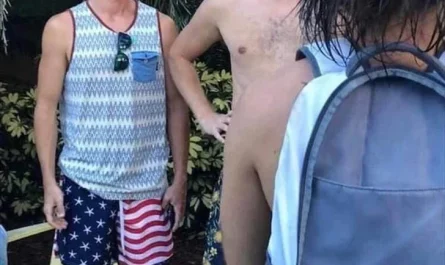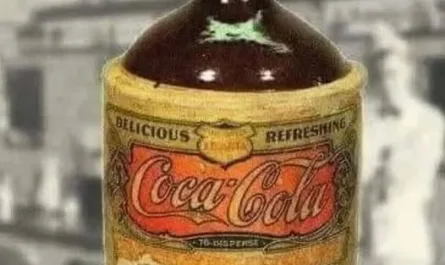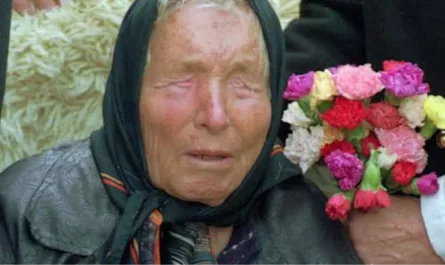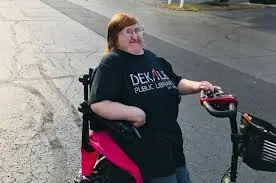
It started with cruelty.
In the summer of 2019, Melissa Blake—a writer, blogger, and disability activist from Illinois—published an essay criticizing then-President Donald Trump. The piece went viral. So did the backlash.
Trolls descended. Not with arguments or counterpoints, but with venom. “You’re too ugly to post selfies,” one wrote. “Cover your face,” said another. “People like you shouldn’t be seen.”
The attacks weren’t random. Melissa has Freeman-Sheldon syndrome, a rare genetic condition that affects facial and skeletal development. She’s been stared at, whispered about, and pitied her entire life. But this—this was different. This was coordinated, public, and relentless.
Most people would have retreated. Deleted the photos. Closed the account. Melissa did the opposite.
She posted more selfies.
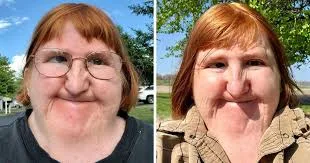
Not out of vanity. Not for likes. But as an act of resistance.
The First Clapback
Within days of the troll storm, Melissa shared a new selfie—smiling softly, eyes direct, caption defiant:
*, you said I shouldn’t post selfies… so I’m going to post more. Because my face belongs here. And so do I.
The internet paused. Then it roared—not with hate, but with support.
Strangers sent messages: “I see you.” “Thank you for not hiding.” “You just taught my daughter what strength looks like.”
The selfies kept coming. One a week became one a day. Each image was a quiet rebellion: Melissa in sunlight, in shadow, in glasses, in red lipstick, in pajamas, in tears, in laughter. Always unfiltered. Always her.
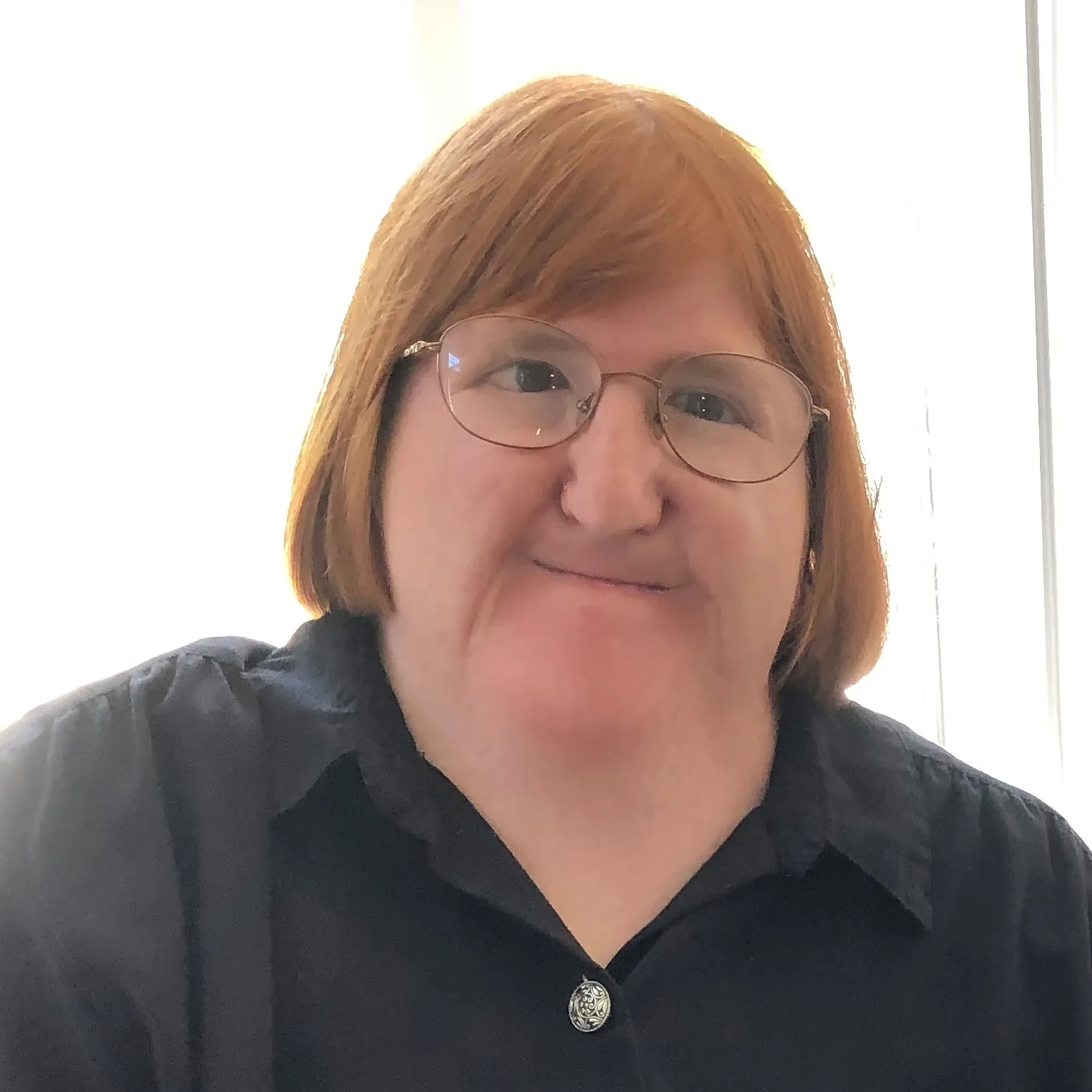
The Birth of #MyBestSelfie
By early 2020, something shifted. What began as survival became a movement.
On January 1, 2020—a leap year—Melissa made a promise to herself and the world:
I will post one selfie every single day for 366 days. Not because I think I’m beautiful by magazine standards. But because I’m learning to believe I’m beautiful by my standards. This is #MyBestSelfie.
And she did.
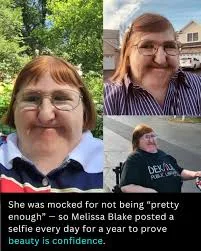
Every. Single. Day.
Through lockdowns. Through grief (her father passed away that spring). Through chronic pain flares. Through days when getting out of bed felt impossible.
She posted.
The Rules Were Simple
- One selfie per day.
- No filters.
- No apologies.
- Caption must include something true—about mood, body, identity, or joy.
Some days the caption was fierce:
“Still here. Still disabled. Still posting.”
Others were tender:
“Today my face hurts. But I’m still showing up.”
One day, mid-quarantine, she wrote:
“I haven’t left the house in 47 days. My hair is a mess. My skin is breaking out. This is still my best selfie—because it’s real.”

The Ripple Effect
#MyBestSelfie wasn’t just about Melissa anymore.
Thousands joined. Disabled people. Chronically ill people. Survivors of bullying, abuse, eating disorders. People who had never felt “pretty enough.”
They posted with the hashtag. They tagged Melissa. They told their stories.
A teenager with burn scars shared her first bare-faced photo in years. A trans man posted his post-top-surgery chest with pride. A 72-year-old woman with Parkinson’s wrote: “I shook so much taking this. But I did it. Thank you, Melissa.”
The internet—often a landfill of cruelty—became, for a moment, a gallery of courage.

The Science of Self-Love
Melissa didn’t know it at the time, but she was engaging in a powerful form of cognitive behavioral therapy—exposure with response prevention. By repeatedly facing the fear (of being seen, judged, mocked), she rewired her brain’s threat response.
Psychologists call this post-traumatic growth. She calls it healing in public.
Studies back it up:
- A 2021 study in Body Image found that regular selfie-posting with positive self-captioning improves body satisfaction and reduces social anxiety—especially for marginalized groups.
- The Journal of Disability Studies noted that visible self-representation by disabled people online disrupts ableist beauty norms and fosters community resilience.
Melissa became living proof.
The Final Selfie: Day 366
December 31, 2020. 366 selfies. 366 truths.
Melissa posted her final image: no makeup, hair in a messy bun, eyes tired but bright. The caption read:
This is not the end. This is the beginning. I started this challenge to prove a point to trolls. I’m ending it having proven something to myself: I am enough. And so are you. Keep going. Keep showing up. The world needs your face.
The Legacy
The #MyBestSelfie archive lives on her blog and Instagram. It’s been featured in The New York Times, BBC, and Teen Vogue. Schools use it in lessons on digital citizenship and self-esteem. Disability organizations cite it in advocacy training.
But the real legacy isn’t in the press.
It’s in the private messages Melissa still receives:
“I started posting selfies because of you. I’ve never felt braver.” “My daughter saw your photos and said, ‘Mom, she looks like me.’ Thank you.” “I was going to delete my account. Then I saw Day 147. I stayed.”
A New Kind of Beauty Standard
Melissa never asked to be a role model. She just refused to disappear.
In doing so, she redefined beauty—not as symmetry, or ability, or conventional appeal—but as presence.
As courage.
As refusal to be erased.
The Takeaway
The trolls wanted her silent. She gave them 366 days of noise.
They wanted her hidden. She gave them visibility.
They wanted her ashamed. She gave them pride.
This is what resistance looks like—not a raised fist, but a raised phone. Not a battle cry, but a selfie.
Beauty isn’t about fitting in. It’s about taking up space. Unapologetically.
Melissa Blake didn’t just survive the internet. She rewrote its rules.
And every time someone—anywhere—posts a photo of their real, imperfect, glorious face with the hashtag #MyBestSelfie, her revolution continues.
One click at a time. One face at a time. One brave, beautiful truth at a time.

